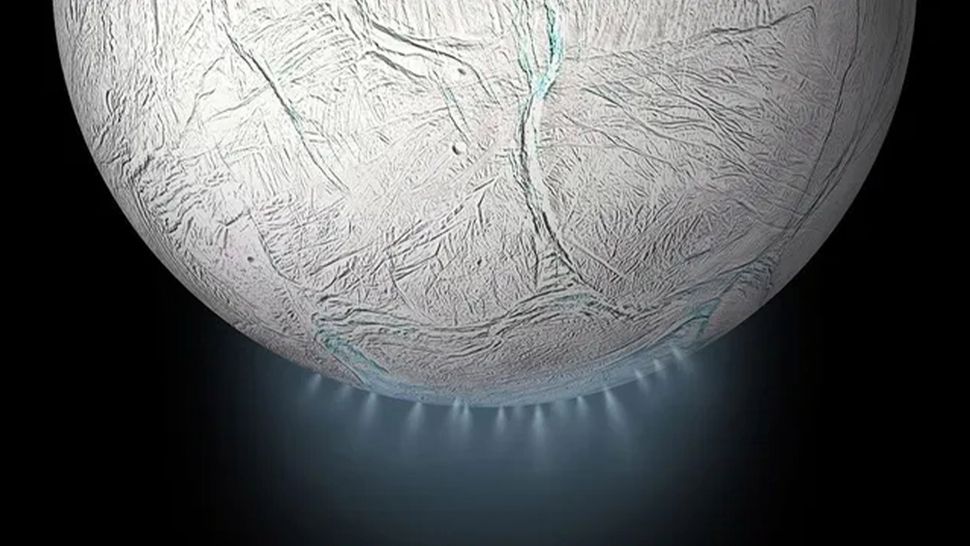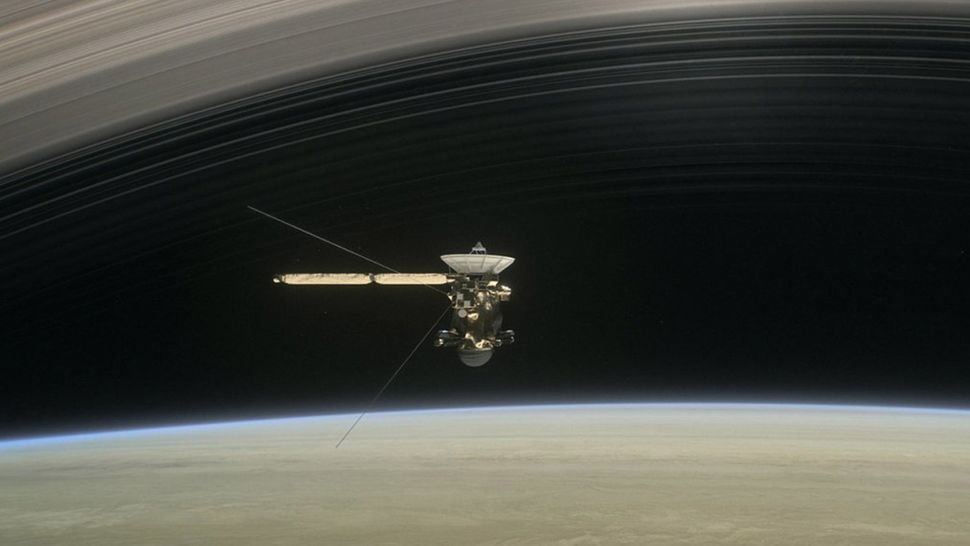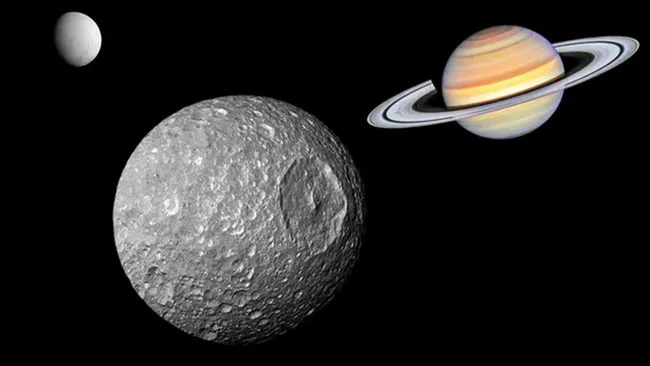Scientists Find Potential Underground Ocean on Saturn’s Moon Mimas, Previously Unimagined
A new study of Saturn’s ‘Death Star’ moon Mimas finds evidence of a young, underground ocean that may be hospitable to early forms of life.
Astronomers have made a remarkable revelation regarding Mimas, a small moon of Saturn. It seems that beneath its thick icy shell, there exists a concealed liquid ocean, which suggests the potential for habitability. This groundbreaking discovery has the potential to redefine our understanding of ocean moons and revolutionize our search for extraterrestrial life within our solar system.
Initially, Mimas, also known as the ‘Death Star’ due to its resemblance to the Empire’s space station in Star Wars, does not appear to possess the characteristics necessary to support an ocean. However, this finding challenges those assumptions. Surprisingly, the team of researchers estimates that the ocean lies approximately 12 to 18 miles (20 to 30 kilometers) beneath Mimas’ icy surface. They also believe it to be relatively young, having formed within the past 2 to 25 million years. Despite remaining hidden for millions of years, this ocean accounts for at least half of the moon’s total volume.
Valery Lainey, a scientist at the Observatoire de Paris and a member of the discovery team, emphasized the significance of the findings. He stated that the discovery of habitability conditions on a solar system object like Mimas, which was unexpected to have liquid water, is truly astonishing.This discovery further highlights the similarities between Mimas and its Saturnian moon counterpart, Enceladus. Scientists already knew that Enceladus had a subsurface ocean, and now Mimas joins in with similar characteristics. Both moons are located at comparable distances from the gas giant planet and share similar sizes. Enceladus, covered in ice, measures around 310 miles (500 kilometers) across, while Mimas, also frigid and icy, is slightly smaller at 246 miles (396 km) across.
However, there is one notable difference between the two moons. Enceladus has massive jets and plumes that breach its surface, allowing NASA’s Cassini spacecraft to fly through and confirm the presence of oceans and even discover complex molecules within. On the other hand, Mimas has yet to crack its icy crust, preventing Cassini from directly observing its ocean.Despite this limitation, Cassini played a crucial role in the discovery of Mimas’ ocean. The spacecraft spent 13 years in Saturn’s system before intentionally crashing into the gas giant in 2017. While it couldn’t directly observe Mimas’ ocean, its data and observations contributed to our understanding of the moon’s unique characteristics.
The thickness of Mimas’ icy shell is believed to be the reason why no surface activity has been observed. Lainey explained that the ocean has been maintained beneath the icy crust for millions of years without any significant activity betraying its presence.In conclusion, the discovery of habitability conditions on Mimas and its similarities to Enceladus are remarkable. Although Cassini couldn’t directly observe Mimas’ ocean, its contribution to the overall understanding of the moon’s characteristics is invaluable.
Mimas’ ‘wobble’

Lainey and her colleagues made an initial discovery of a buried liquid ocean on Mimas when they analyzed data from the Cassini spacecraft to investigate the Cassini division, a gap in Saturn’s rings.In 2010, while studying whether a change in Mimas’ orbit could have caused the Cassini division, the team observed an unusual shift in both the moon’s rotation and orbit. By 2014, they concluded that these significant oscillations were either due to Mimas having a misshapen, solid rocky core or a subsurface ocean that allowed its outer shell to move independently.
The breakthrough occurred when the team finally simulated the motion of Mimas and found that a rocky core, if elongated and flat like a pancake, could explain the observations. However, this did not align with what they observed in reality. Additionally, the evolution of Mimas’ orbit since 2014 provided further evidence supporting the existence of a global subsurface ocean.Lainey stated, “There is no solid interior that can account for the rotation and orbital changes of Mimas. It is a relief to finally demonstrate that this is the solution.”
A waterlogged moon

Not only did the team successfully determine that the oceans have only existed for a few million years due to Mimas’ flattened orbit, but they were also able to precisely calculate the amount of water present in the moon’s oceans.Lainey stated, “Liquid water fills at least 50% of Mimas’ volume, which is a significant quantity considering the satellite’s size.”
This water seems to be interacting with the rocky core of Mimas, resulting in both friction-induced heating and intriguing chemical reactions. Lainey refers to this as “interesting chemistry” that is likely occurring on the Saturnian moon at present.The interaction between water and rock has played a crucial role in the origin and sustainability of life on Earth. Therefore, the possibility of such chemistry on Mimas is indeed an exciting prospect for investigating life and habitability within our solar system.Lainey expressed his astonishment, stating, “Mimas is a small, seemingly inactive object that appears extremely cold. One would never expect any geophysical activity, such as heating or contact between water and silicates in its rocky core. Discovering this phenomenon is truly remarkable.”
For future explorations, Lainey expressed his desire to land a spacecraft on Mimas or even Enceladus. He explained that since these two moons are in close proximity and possess similar ocean systems at different stages of evolution, any space mission to Enceladus would likely include a visit to Mimas as well.However, with NASA’s planned Orbilander mission scheduled to depart Earth in 2038 and reach Mimas in 2050, such a project is still a considerable distance away.
In the meantime, Lainey intends to conduct further investigations of Mimas from Earth. His goal is to gain a deeper understanding of how the moon’s temperature has changed over time, how the presence of the ocean has influenced its orbit, and what impact this has had on Saturn’s rings and other moons. These findings could contribute to a more accurate estimation of the age of Mimas’ ocean.
Lainey emphasized that Mimas certainly does not possess the characteristics of a habitable object. Therefore, it is possible that if this particular object can support life, there may be other types of objects that could also be habitable. The team’s findings were published in the journal Nature on Wednesday, February 7th.
This information was originally shared on Space.com.
This article is republished from livescience under a Creative Commons license. Read the original article.
Do not forget to share your opinion with us to provide you with the best posts !




0 Comments